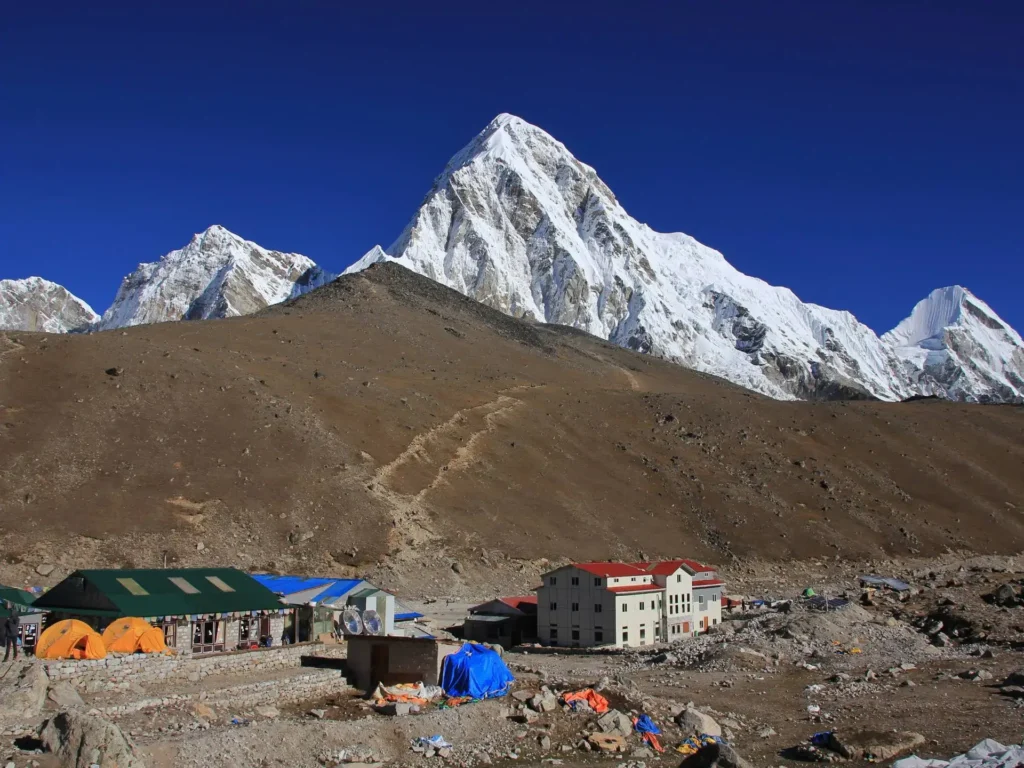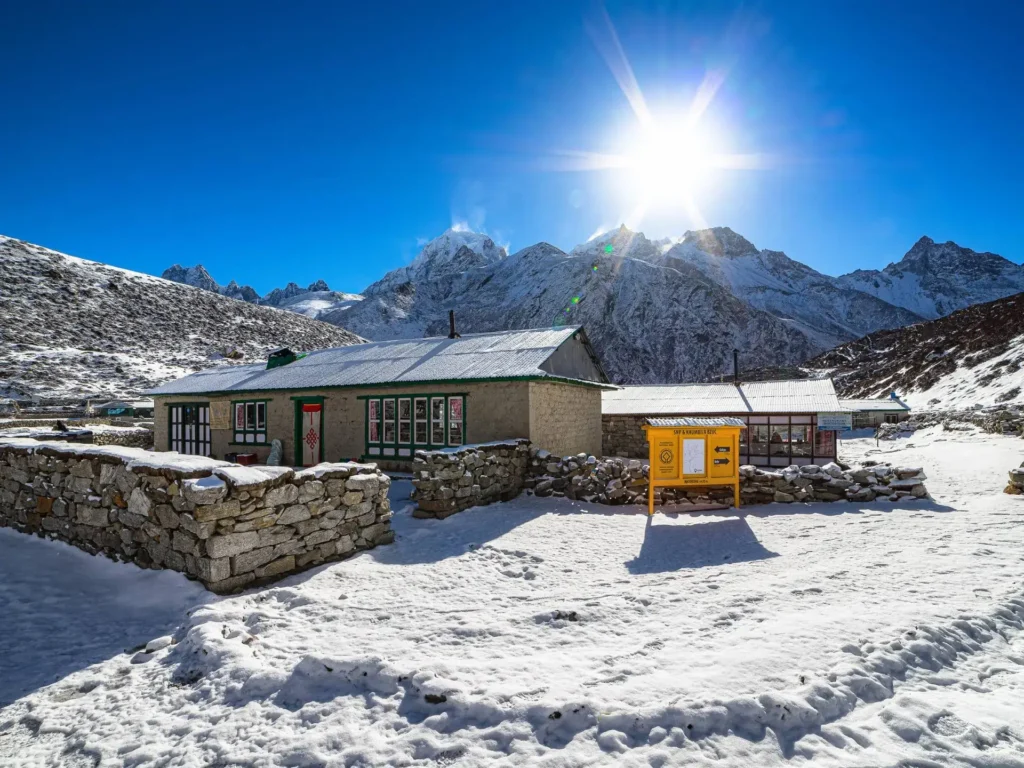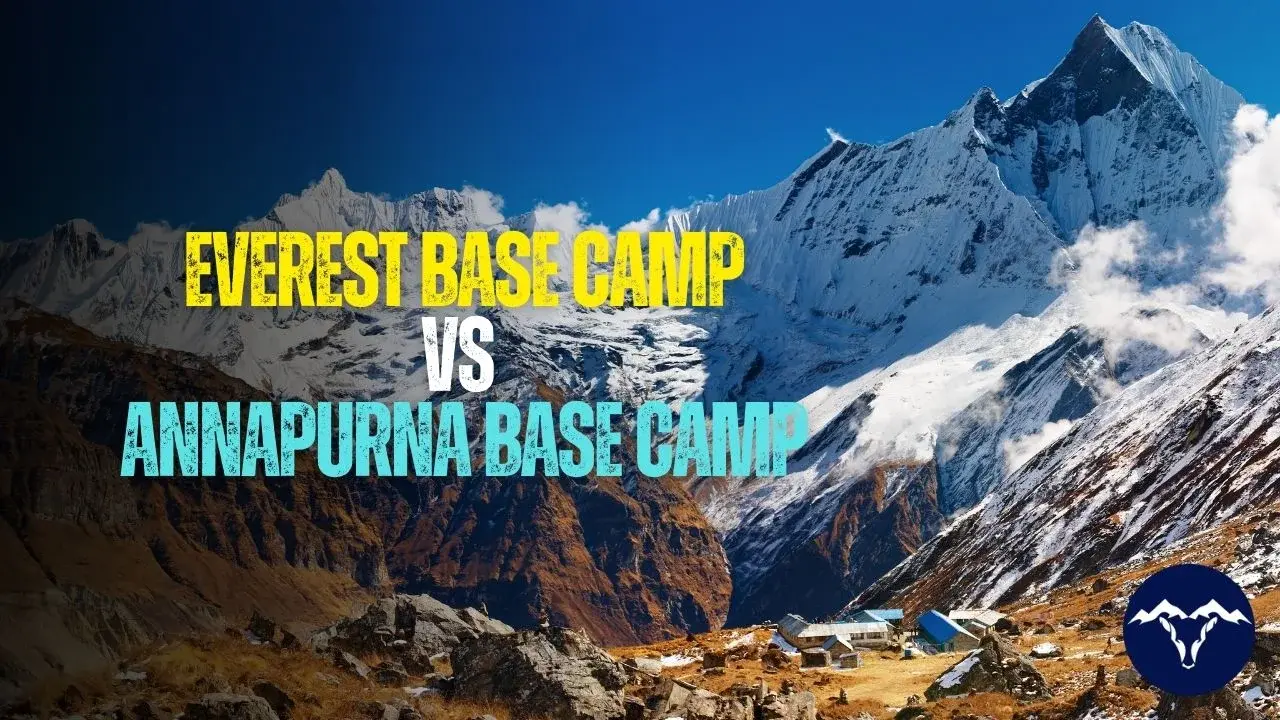Everest Base Camp and Annapurna Base Camp Trek are two popular trekking destinations in Nepal. Both located in the Himalayas of Nepal, these treks offer natural beauty, cultural richness, and adventurous journeys.
Everest Base Camp Trek is based in the Khumbu region of Nepal, located in Solukhumbu District. It sits 5,364 meters above sea level, at the base of the world’s tallest peak, Mt. Everest. Similarly, Annapurna Base Camp is located in the Mid-Western region of Nepal, at the base of Mt. Annapurna, the deadliest peak of Nepal. It sits at 4130 meters above sea level.
While Everest Base Camp Trek is challenging, the Annapurna Base Camp Trek might not seem more physically and mentally demanding. However, it does not mean you do not require any precautionary methods and plans for trekking. Both treks are naturally rich taking you through the diverse landscapes and settlements. Everest Base Camp brings the Sherpa culture and tradition and the views of Mt. Everest, Ama Dablam, Cho Oyu, and Lhotse to your table. Similarly, the Annapurna Base Camp Trek brings amazing sightseeing opportunities from Ghandruk, Doban, Machhapuchhre Base Camp, and the natural hot springs at Jhinu Danda.
Whether you are looking for a refreshing or an adventurous trek, both Everest Base Camp and Annapurna Base Camp Trek offer unique and unforgettable experiences throughout the journey. Let’s explore them more in detail in the blog below:
Table of Contents

Highlights of Everest Base Camp Trek
- 360 views of Mt. Everest, Ama Dablam, Cho Oyu, Lhotse, Island Peak, and Nuptse.
- Flora and fauna in the Sagarmatha National Park, a UNESCO World Heritage Site.
- Diverse Sherpa culture in Namche Bazaar, Phakding, and Lukla.
- Explore Gorakshep, the last settlement in the Everest Region, and Kala Patthar, the world’s highest webcam.
- Explore Buddhist monasteries like Tengboche and Pangboche Gompas.
- View of the Khumbu Glacier.
- Diverse settlement and blended cultural aspects of Namche Bazaar

Highlights of Annapurna Base Camp Trek
- Views of mountain peaks including Dhaulagiri I (8,167m / 26,795ft), Annapurna I (8,091m / 26,545m), Nilgiri (7,061m / 23,166ft).
- Sunrise and sunset views from Ghandruk and Poon Hill.
- Reach Annapurna Base Camp and Machhapuchhre Base Camp.
- Explore flora and fauna inside the Annapurna Conservation Area.
- Take a refreshing bath in the natural hot springs of Jhinu Danda.
- Delve into traditional and remote village life around Doban, Ghandruk, and Poon Hill.
Reasons to Choose Everest Base Camp
As Nepal’s leading trekking destination, Everest Base Camp Trek offers a wide range of opportunities. First, Mt. Everest (8,848 m) is the main attraction of this trek. Similarly, the diverse settlement of the Sherpa community rich in Buddhist and Tibetan culture makes it a unique journey. In addition, the trekking route is remote and adventurous, best for those looking to test their limits.
Difficulty Level of EBC Trek:
The difficulty level of the Everest Base Camp is considered ‘Challenging.’ It means you must be physically and mentally prepared to take this trek comfortably. Since the landscapes are steep and rugged, you will be physically exhausted. On top of that, your daily itinerary includes a trek time of 6 to 7 hours, which is challenging. Moreover, the high altitude above 5000 meters might not be favorable to all trekkers.
Preparing well with your fitness, respiration, and packing well for high altitude to remain well and avoid altitude sickness during this trek is recommended.
Cost of EBC Trek:
Everest Base Camp Trek is one of the most expensive treks in Nepal. The standard trekking package will cost you anywhere from USD 1000 and more. But it includes all the amenities like transportation, accommodation, permits, and meal plans. It does not include any international airfare or personal expenses.
Weather Condition:
One of the key reasons we recommend you pack well is due to the weather conditions of the Everest Region. The weather and climate of the Everest region are unpredictable, which means they change quickly, so sudden rainfall and a gloomy environment are common here. However, you can easily tackle this with proper packing lists and gears.
Reasons to Choose Annapurna Base Camp
Trekkers with aspirations to delve into adventures, cultural immersion, and natural beauty mostly choose Annapurna Base Camp Trek. Since this package fulfills all the expectations with its diverse landscape, sightseeing opportunities, and snow-capped peaks, it has been a famous destination in the last few years.
Your journey will be fruitful as you will experience the diverse culture from the lifestyle of the bustling city of Pokhara to the remoteness of Doban and Bamboo. Also, the natural landscapes of Poon Hill and Machhapuchhre Base Camp are worth visiting this destination.
Altitude of Annapurna Base Camp:
Annapurna Base Camp is located at 4,130 meters above sea level. It might not be as high as Everest Base Camp; however, you must still be careful about altitude sickness and related issues. Aside, it gives a clear view of the beautiful Annapurna Range, including peaks like Hiunchuli, Annapurna South Annapurna I, Khangsar, Gangapurna, Annapurna III, and Machhapuchhare.
Difficulty Level:
Considering Annapurna Base Camp. it is a moderate type of trekking, which of course requires physical fitness but beginners can also do this trek. But always remember to pack well, prepare your gear, and focus on your physical and mental fitness before starting the trek.
Cost of Annapurna Base Camp Trek:
The cost of Annapurna Base Camp Trek is moderate, starting anywhere from USD 500 to more. Some travel agencies might charge you higher depending on the amenities they offer during the journey. The overall package cost will cover the expenses of permits, accommodation, domestic transportation, safety kits, and meals. It includes tips for guides and porters, international flight costs, insurance, and rescue costs.
Weather in Annapurna Region:
If you look at the weather pattern around the Himalayas of Nepal, it is dynamic and unpredictable, which is the same case for Annapurna Base Camp. The winter season features temperatures below 0 Degrees Celsius while the summer comes with hot sunny days. Traveling during the spring and autumn is advised to make the most of this journey. Also, remember to pack essential and weather-friendly clothes, gear, and focus on your physical and mental strength.
Cost Differences: Everest Base Camp Vs. Annapurna Base Camp
Considering these two different base camp treks, the cost comes to be different for both. The Everest Base Camp Trek starts at around USD 800 and above while Annapurna Base Camp is relatively cheaper, starting at around USD 500 per person.
The cost is also highly influenced by the number of days in the itinerary. For example, if you are on a 12-day trekking package to ABC, companies will charge you anywhere above USD 650 per person. But if your itinerary is over 14 Days, it might cost you more than USD 750. The same goes for the Everest Base Camp Trek; the cost is directly proportional to the number of days on the itinerary.
Overall, comparing Everest Base Camp with Annapurna Base Camp, the EBC Trek is costlier than the ABC Trek.

Accommodation Facilities: Everest Base Camp Vs. Annapurna Base Camp
When you set your journey to these beautiful destinations of Nepal, accommodation remains one of the integral parts. While both Everest Base and Annapurna Base Camp Trek offer diverse forms of accommodation, their service might differ.
The most common accommodation form in both trekking packages is a tea house with a shared bedroom and bathroom. Everest Base Camp only features tea houses, lodges, and hotels, while Annapurna Base Camp also has an option of homestays at some localities, which is cheaper than hotels and tea houses.
Types of Accommodation in EBC Trek:
- Hotels/Lodges – Only in Namche Bazaar
- Tea Houses – Only in some stops
- Camping – Managed by trekkers themselves or an agency
Types of Accommodations in ABC Trek:
- Hotels/Lodges
- Tea Houses – Almost Every stop
- Homestays
- Camping – Optional
Choosing the best trekking package between Everest and Annapurna Base Camp depends on your expectations and preferences. Whether it is in the form of logistics, food, or budget, it might differ from one package to the other. EBC is more difficult, long in duration, and need more money whereas ABC is not that difficult as compared to EBC, can be completed in 11 days, and takes less money.
If you want the thrill of Sagarmatha region, the world’s highest peak, and the cold and rocky terrain of Solukhumbu, have enough time, have done a few high altitude treks, got the budget then go with EBC. On the other hand, if you are new to trekking, planning for EBC, and short on budget and time then ABC is the right choice.
However, both packages offer one of the best experiences in rural Nepal, allowing you to delve into the natural and cultural richness of the Himalayas. This completes our topic of EBC vs ABC. If you have any questions and suggestions or experiences to share then please let us know.

Leave a Comment